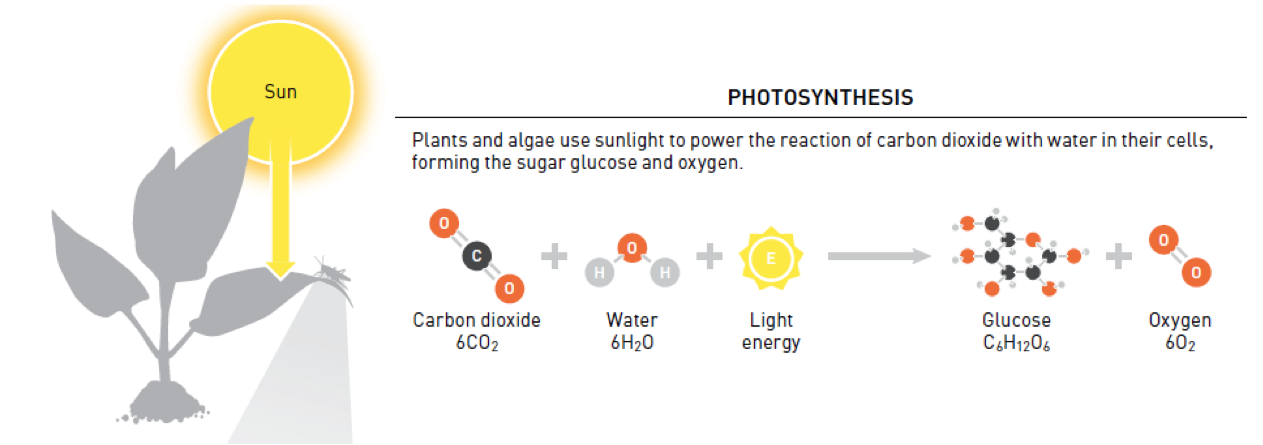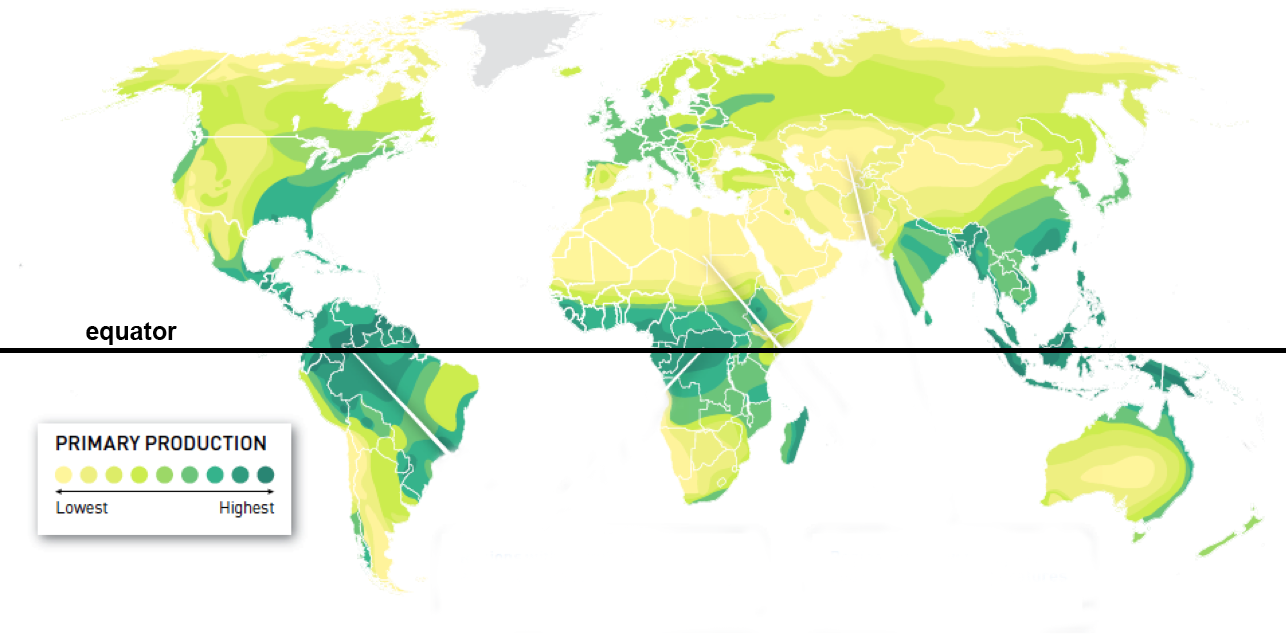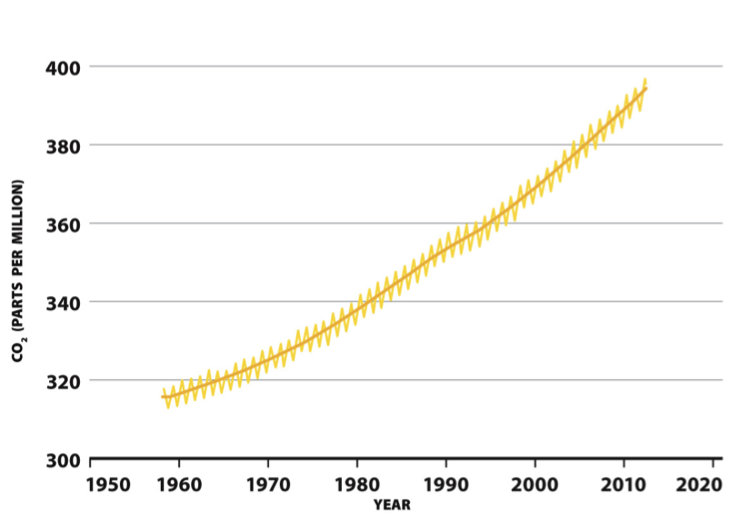Critical Analysis Activity
Introduction
Chapter 14. Critical Analysis Activity
Introduction
true
true
You must read each slide, and complete any questions on the slide, in sequence.
Critical Analysis Question:
Why do carbon dioxide levels drop during the summer in the Northern Hemisphere?
To formulate your answer, first consider these additional thought questions:
Question 1
1.
| 1. Consider the process of photosynthesis. During photosynthesis what does the plant take in? Select all that apply. | |
| sugar | |
| light energy | |
| oxygen | |
| water | |
| carbon dioxide | |
| minerals | |
::sugar: Sugar is produced by the plant during photosynthesis, not taken in.::light energy: During photosynthesis the plants utilize light energy.::oxygen: Oxygen is produced by the plant during photosynthesis, not taken in.::water: During photosynthesis the plants utilize water.::carbon dioxide: During photosynthesis the plants utilize carbon dioxide.::minerals: Minerals are produced by the plant during photosynthesis, not taken in.
1. Consider the process of photosynthesis. During photosynthesis what does the plant take in?

Question 2
2.
2. Consider the cycle of plant life through the seasons. During which season do you think that the highest photosynthetic activity occurs?
| A. |
| B. |
| C. |
| D. |
Correct: Photosynthetic activity increases in spring and peaks in summer, and in summer, the quantity of sunlight is greatest, the number of daylight hours is greatest, and many plants are actively growing and producing leaves.
Incorrect: Photosynthetic activity increases in spring and peaks in summer, and in summer, the quantity of sunlight is greatest, the number of daylight hours is greatest, and many plants are actively growing and producing leaves.
Question 3
3.
3. Look at this map of the world. Examine the quantity of vegetated land mass above the equator versus below the equator. Which hemisphere has the greatest vegetated land mass?
| A. |
| B. |
Correct: The Northern Hemisphere has about twice as much land area as the Southern Hemisphere.
Incorrect: The Northern Hemisphere has about twice as much land area as the Southern Hemisphere.

Question 4

4.
| 4. Let’s put it all together now. Annually, the global carbon dioxide level in the atmosphere rises and falls, creating this zig-zag pattern. Why do carbon dioxide levels drop during the summer in the Northern Hemisphere? Select all of the statements from the following list that are true. | |
| The vegetated land mass is greatest in the Northern Hemisphere. | |
| Photosynthetic activity peaks in the winter; hence there are lower levels of atmospheric carbon dioxide during summer. | |
| During photosynthesis plants release carbon dioxide. | |
| During the Northern Hemisphere’s summer, the plants are actively growing and photosynthesizing, taking in high levels of carbon dioxide. | |
::The vegetated land mass is greatest in the Northern Hemisphere.: The vegetated land mass is greatest in the Northern Hemisphere.::Photosynthetic activity peaks in the winter; hence there are lower levels of atmospheric carbon dioxide during summer.: Photosynthesis peaks during summer when plants are actively growing, and daylight length is greatest.::During photosynthesis plants release carbon dioxide.: During photosynthesis, plants take in carbon dioxide, and they release oxygen.::During the Northern Hemisphere’s summer, the plants are actively growing and photosynthesizing, taking in high levels of carbon dioxide.: During the Northern Hemisphere’s summer, the plants are actively growing and taking in high levels of carbon dioxide. This high level of photosynthetic activity reduces the global atmospheric level of carbon dioxide. (See Figure 14.15).
4. Let’s put it all together now. Annually, the global carbon dioxide level in the atmosphere rises and falls, creating this zig-zag pattern. Why do carbon dioxide levels drop during the summer in the Northern Hemisphere? Select all of the statements from the following list that are true.
Critical Analysis Question
5.
Now we return to the original Critical Analysis Question: Why do carbon dioxide levels drop during the summer in the Northern Hemisphere?
14.1 Activity Completed!
Activity results are being submitted...